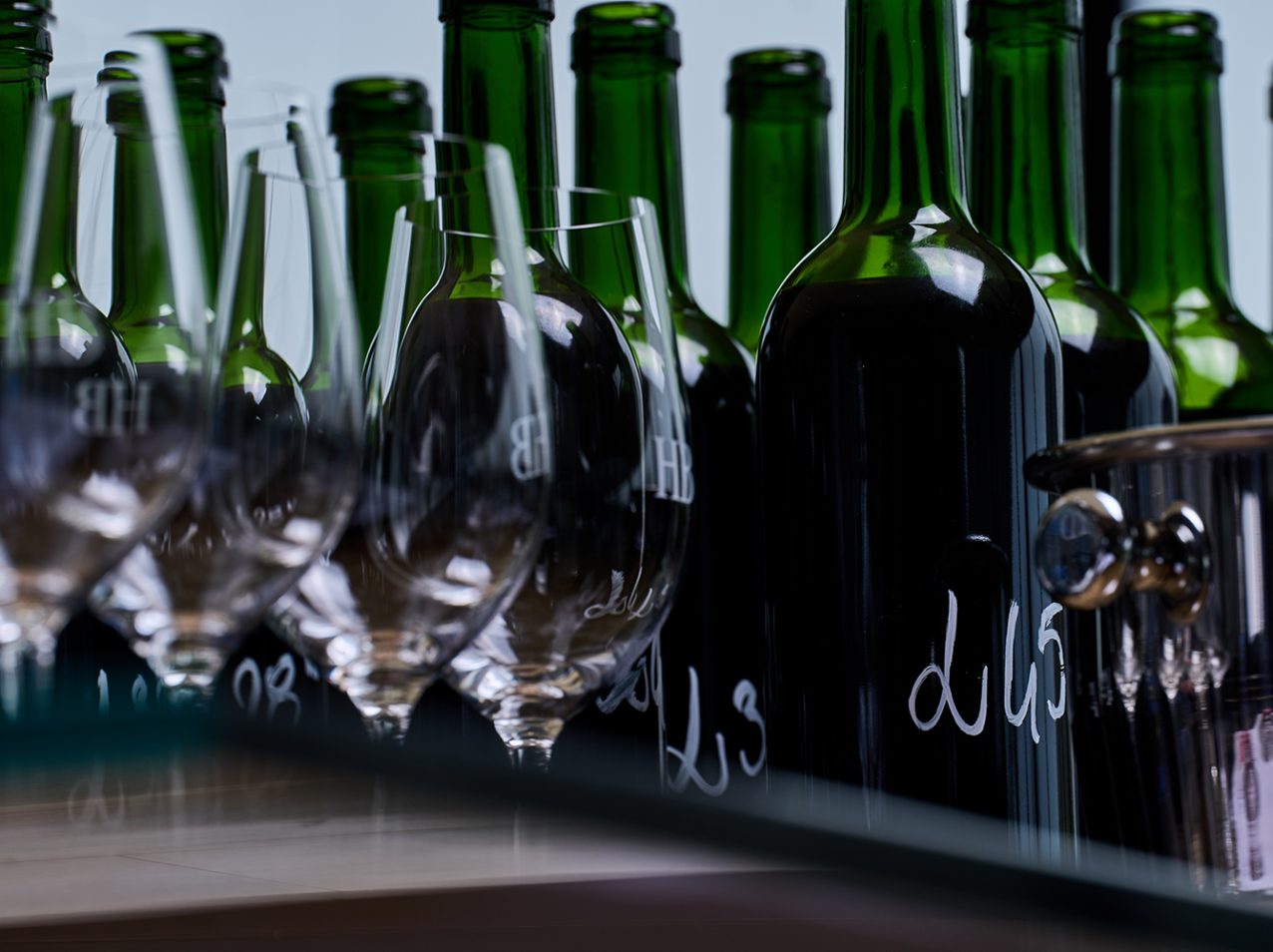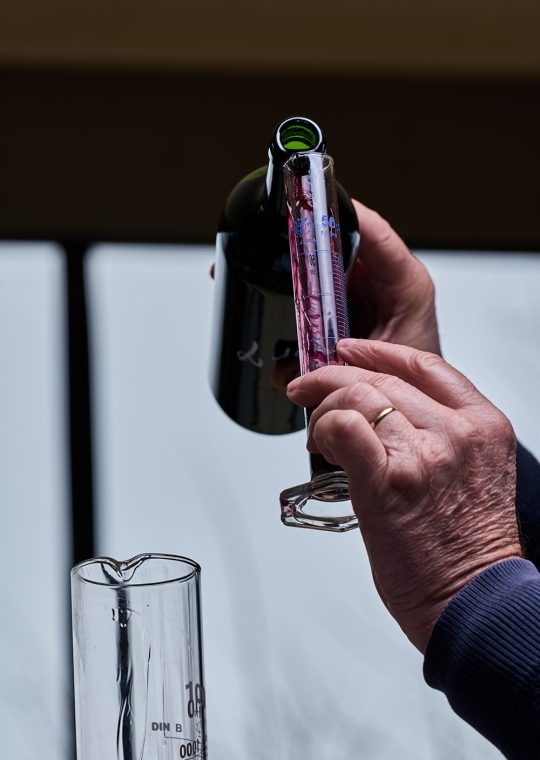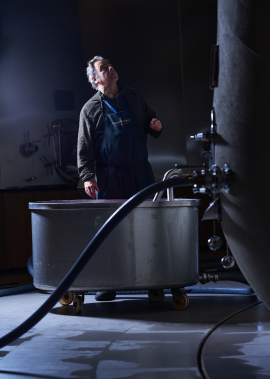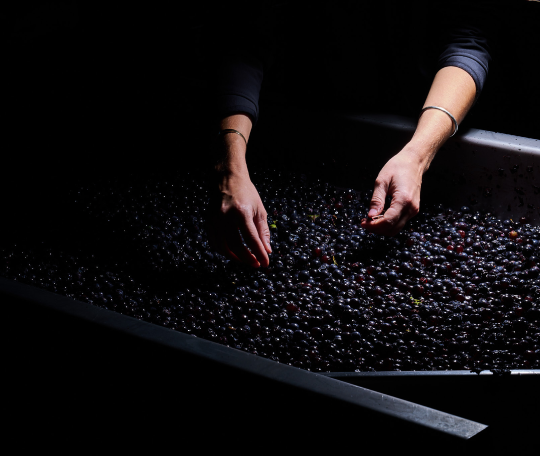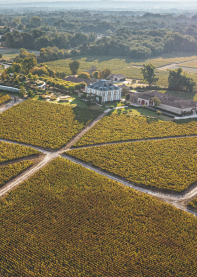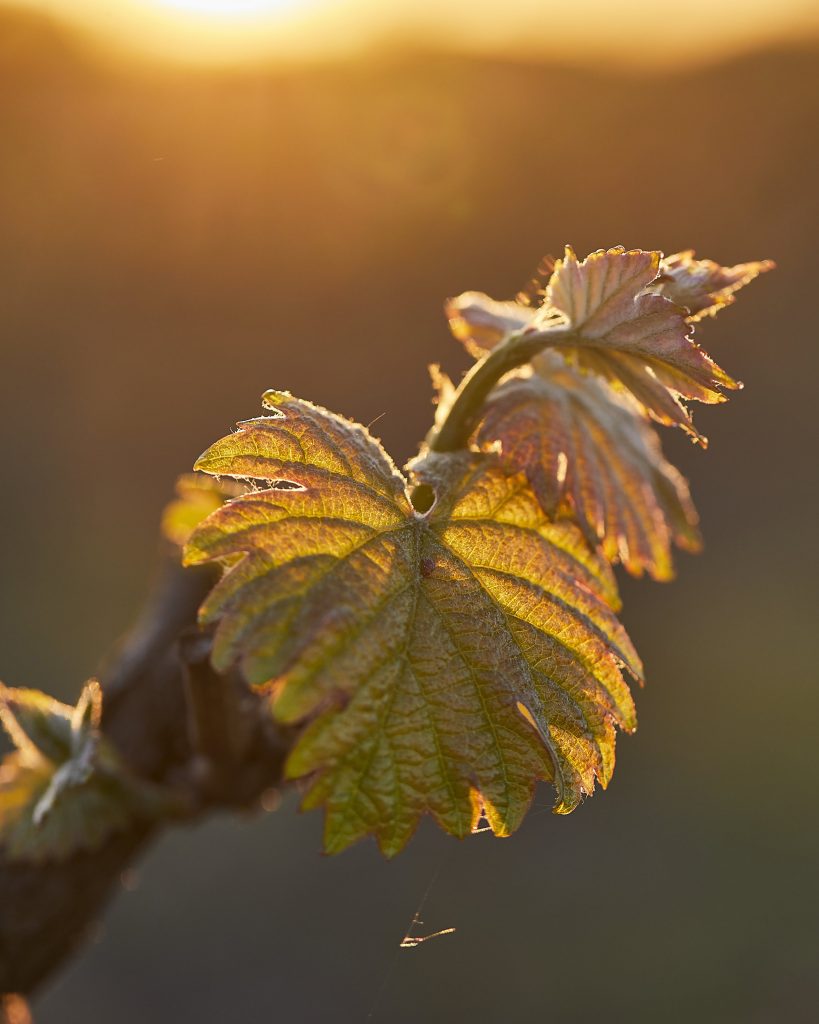Cellar
The ethics of balance •
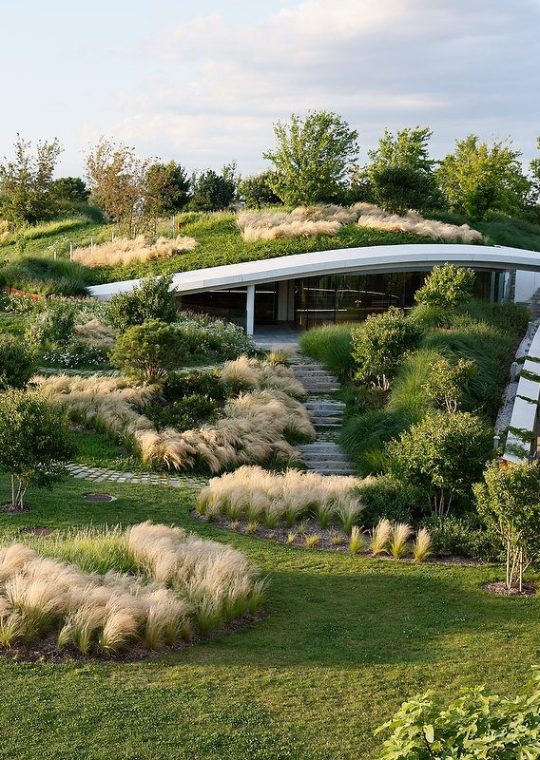
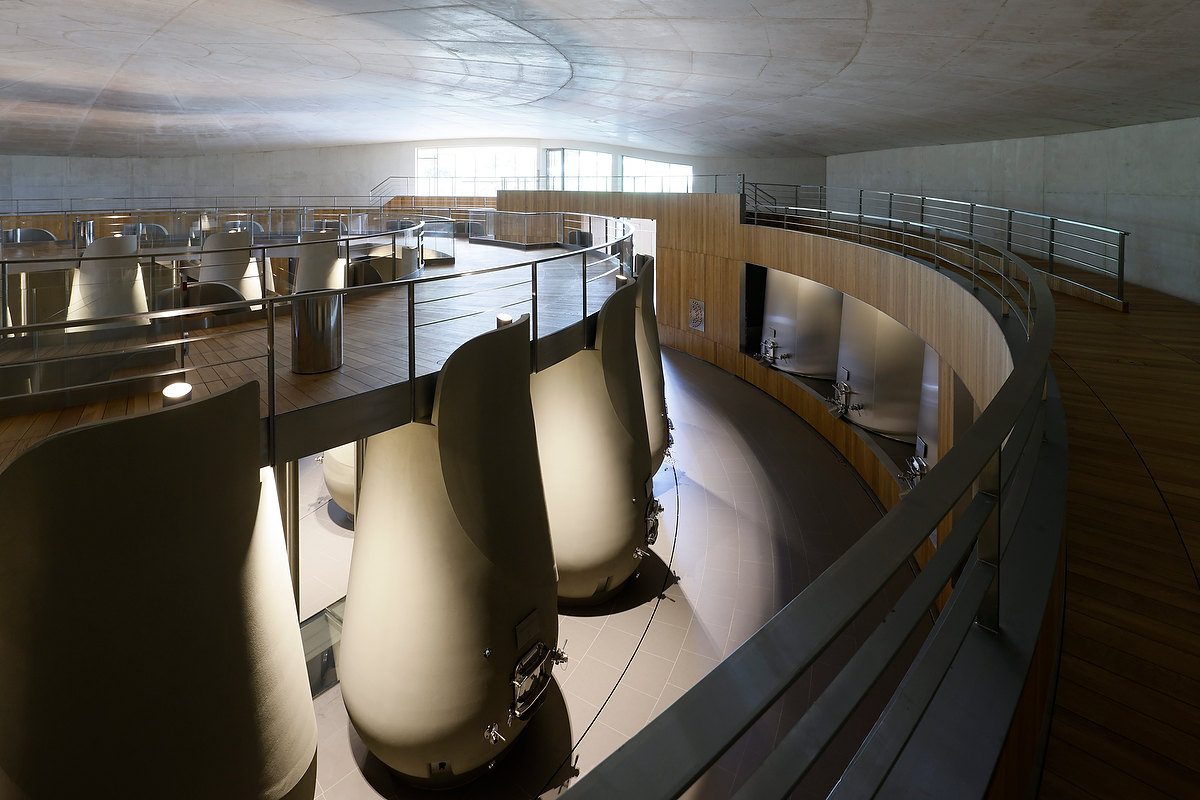
No forcing, no short-cuts, no-excess: just revealing and honouring the soul of the terroir.
Vinification
Technology at the service of terroir
After meticulously sorting each of the fifty-four parcels, they are vinified separately.
Made of concrete or stainless steel, the vats are all truncated cone-shaped, with double insulated walls. With a capacity of between 50 and 200 hectolitres, they are sized to suit the plot-by-plot harvest. Alcoholic fermentation takes place in these vats, at a controlled temperature of 26-28°C, with gentle pump overs. Malolactic fermentation takes place in barrels and stainless steel vats.
The wines are carefully selected and tasted throughout the year. Exceptionnal batches are reserved for the grand vin, and meet the quality requirements that are the secret of the Haut-Bailly terroir.
The selection is very strict. The blends of Château Haut-Bailly and Haut-Bailly•II are created with great precision, following a series of tastings. Some of the batches are then dedicated to a third wine, HB.
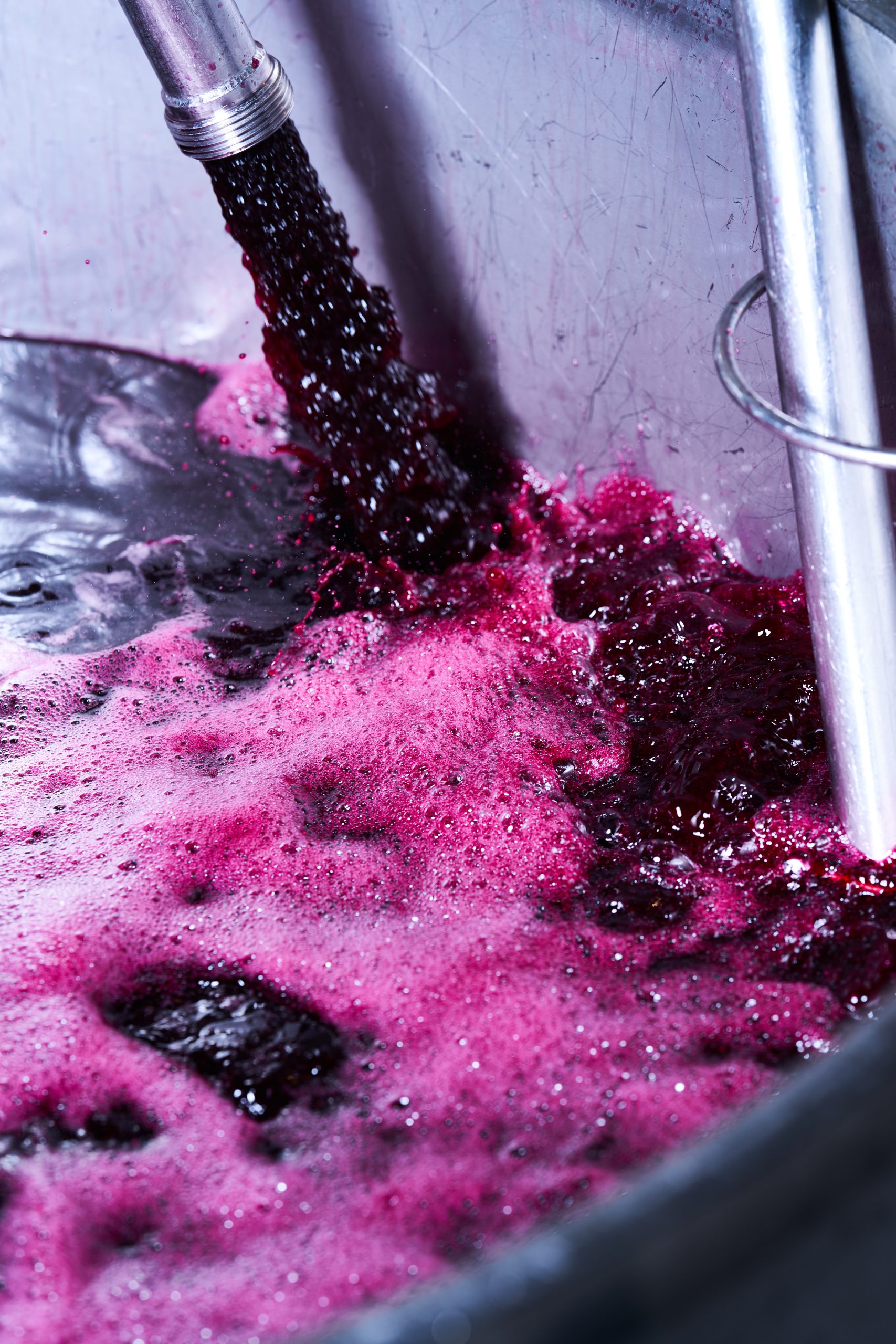
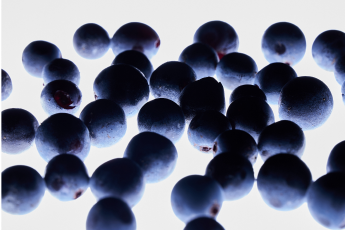
Blending
Aristotle summed up very well the philosophy that applies to the blending of a Grand Vin:
‘The whole is greater than the sum of its parts’.
Assembly is the art of identifying and matching elective affinities, in the same way that we speak of instrumental composition in music, or colour association in painting. It’s a question of combining a sum of unitary components to produce a particular harmony.
The successful blending at Haut-Bailly is the result of successive, demanding tastings, over several months, bringing together the expertise of our team. Gabriel Vialard, Véronique Sanders, the vineyard manager and the cellar master all participate in this exercise every year, advised by two wine consultants, Axel Marchal, professor at the Bordeaux University of oenology, and Christophe Ollivier.
Around the tasting table, entirely covered with tubes, decanters, bottles and glasses, all five senses are awakened. The team meticulously selects each sample, qualifies them by structure, density, length and elegance, and finally harmoniously combines them to create a unique, complex wine that reflects the essence of the terroir and the vintage.
The result is a “vin de lieu“, born from a mosaic of terroirs, a diversity of grape varieties and a union of potentials, offering year after year a temporal interpretation of a timeless score and thus unveiling all the magic of blending.
Ageing
The wines are then placed in oak barrels and matured for 14 to 16 months. The estate’s policy is to adapt the proportion of new barrels to the structure of the vintage.
It varies between 50 and 60% for Château Haut-Bailly and averages 30% for Haut-Bailly•II. The barrels, fine-grained French oak, are selected from 7 different coopers.
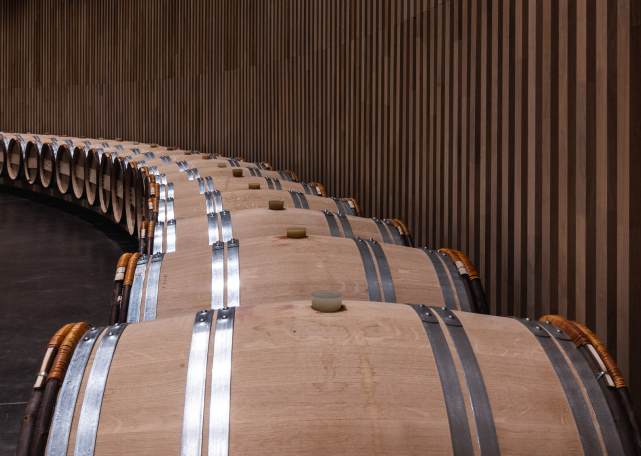
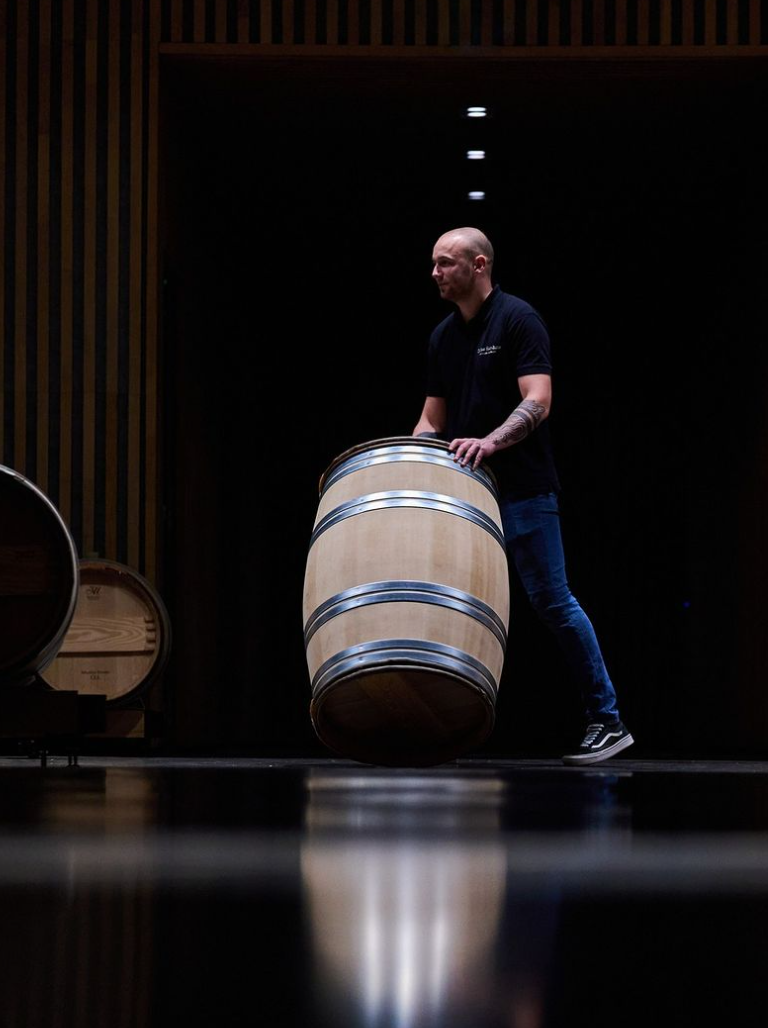
Architecture
The emotion of an architectural creation
The cellar project
for Château Haut-Bailly is the fruit of an encounter, an alchemy of dialogue and creativity.
Architecture blends into the landscape to create a design that preserves the heritage of the existing buildings and forges a close link with the château. We aspired to create a building that was modern and timeless while also perfectly integrating into its surroundings. The château -at the centre of the composition -remains the highest point of the property.
Three major challenges were taken up in this architectural creation.
The first was the contextual approach, integrating the building into the topography of the site. The building needed to fit in with the existing volumetric continuity, preserving the central image of the château.
At the same time, the building’s primary function required it to have large volumes. The complexity of the plot, combined with this requirement, led us to propose a circular building incorporating a rising landscape.
The second challenge was the structural approach. The vault, as if in weightlessness, dominates the vat room at a height of 8.80 metres, without any posts, and supports a suspended garden of 2,400 m2. The use of concrete makes this architectural feat possible, and gives the building its timeless style. Concrete offers a plastic, sculptural, monolithic aspect that makes it possible to explore this complex geometry.
The third challenge is the spatial approach, managing flows and the sensory experience for visitors. Circulation is gentle because the shapes are soft, and contribute to the feeling of well-being that the building provides. Our ambition is for visitors’ sensory memory to be marked by the premises, in the same way as the memory of taste is marked by the wines. The feeling of expansion, compression and suspension provided by the architecture resonates with that experienced when tasting the wines.
Learn more
An exceptional terroir
The Haut-Bailly vineyard is located on one of the highest ridges on the left bank, and is home to century-old vines unique to Bordeaux.


